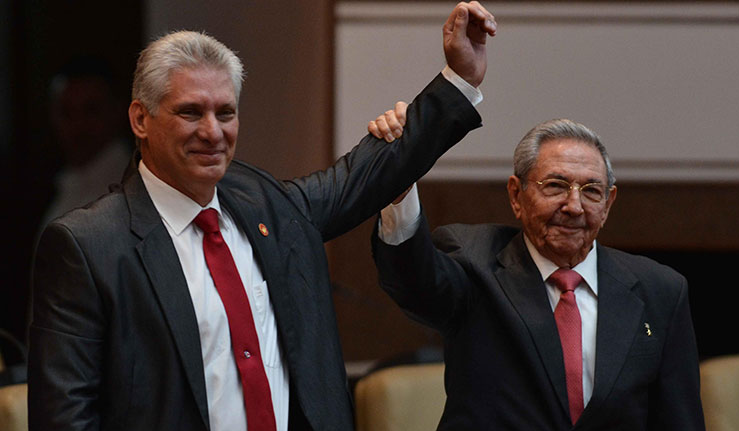Europe Might Take Another Step Back
If Spain fails to have the Common Position lifted or if it succeeds and Havana again turns down European economic cooperation, then Cuba wins once more.
On 19 April, Raúl Castro stepped down as president of Cuba. It is the first time since 1976 that the island’s head of state has not carried the Castro surname. It is a historic moment for one of the world’s few remaining socialist states, as the founding generation of revolutionaries—led by the Castro brothers for nearly six decades—hands over the reins of the country to a younger generation of Cubans, led by the new president, Miguel Díaz-Canel.
As he slowly withdraws from the political stage, the younger Castro leaves his successor a country in dire economic straits after a decade of half-baked economic reforms. But disappointing or not, the Cuban leader’s tenure has been consequential for the island, where it serves as an uneasy respite between the explosive first act of the elder Castro, and the unwritten chapter of their common successor.
A look back at Raúl’s tenure shows a pragmatic, yet reluctant, reformer whose attempts at changing the socialist system were firmly grounded on his desire to save it. One of Raúl’s main legacies is the overdue acknowledgement that the Cuban socio-economic model was not faring well, and that it was—and remains—in need of reform if it is to thrive at all. This so-called “update” (“actualización”) of Cuba’s socio-economic model, initiated by Raúl in 2011, is a response to the “excessive centralisation” of the existing model, which, in his own words, “conspired against the development of initiative in society and throughout the production chain.”
While not an indictment of central planning as a doctrine, the statement does mark an essential departure from the Marxist orthodoxy of Raúl’s brother and predecessor, Fidel Castro, who consistently labeled Cuba’s economic problems as extraneous to the model. Indeed, the elder Castro went so far as to suggest his brother’s reforms were “concessions to the enemy ideology.” More than a mere change in rhetoric, Raúl’s recognition of the Cuban system’s shortcomings is the conceptual foundation on which he based his reforms, which include trimming the public sector, courting foreign investment and enabling the growth of a diminutive private sector.
[…]
If Spain fails to have the Common Position lifted or if it succeeds and Havana again turns down European economic cooperation, then Cuba wins once more.
The Summit of the Americas was marked by discord between the US and Latin American countries. What did it accomplish, if anything?
On April 25, the Inter-American Dialogue hosted a conversation on the Cuba’s evolving political and economic situation and how the Catholic Church views its role in the country.
 Agencia Cubana de Noticias
Agencia Cubana de Noticias